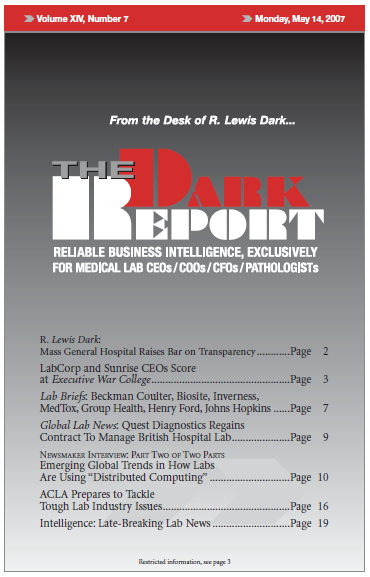“In several different countries, laboratories already use ‘distributed computing’, in the form of a single LIS data center that provides informatics services to as many as 25 laboratories in a region. The trend is to increase interoperability and portability of the information for better patient care.” —Jacques Baudin Executive Vice President, Technidata America Medical Software …
Emerging Global Trends in How Labs Are Using “Distributed Computing” Read More »
To access this post, you must purchase The Dark Report.


